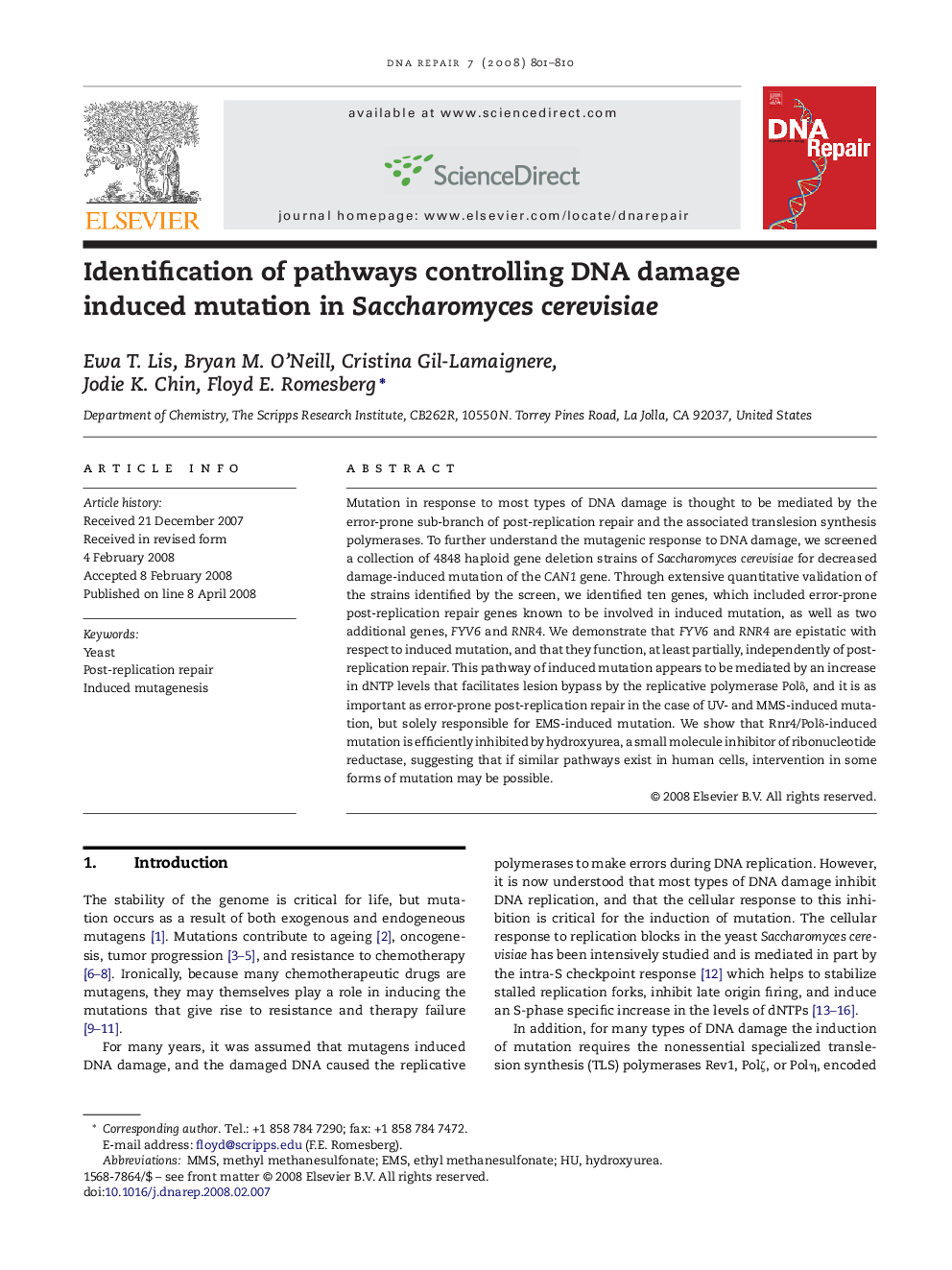| Article ID | Journal | Published Year | Pages | File Type |
|---|---|---|---|---|
| 1980780 | DNA Repair | 2008 | 10 Pages |
Mutation in response to most types of DNA damage is thought to be mediated by the error-prone sub-branch of post-replication repair and the associated translesion synthesis polymerases. To further understand the mutagenic response to DNA damage, we screened a collection of 4848 haploid gene deletion strains of Saccharomyces cerevisiae for decreased damage-induced mutation of the CAN1 gene. Through extensive quantitative validation of the strains identified by the screen, we identified ten genes, which included error-prone post-replication repair genes known to be involved in induced mutation, as well as two additional genes, FYV6 and RNR4. We demonstrate that FYV6 and RNR4 are epistatic with respect to induced mutation, and that they function, at least partially, independently of post-replication repair. This pathway of induced mutation appears to be mediated by an increase in dNTP levels that facilitates lesion bypass by the replicative polymerase Polδ, and it is as important as error-prone post-replication repair in the case of UV- and MMS-induced mutation, but solely responsible for EMS-induced mutation. We show that Rnr4/Polδ-induced mutation is efficiently inhibited by hydroxyurea, a small molecule inhibitor of ribonucleotide reductase, suggesting that if similar pathways exist in human cells, intervention in some forms of mutation may be possible.
